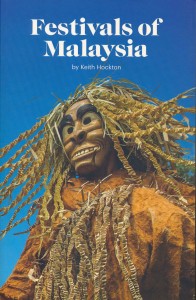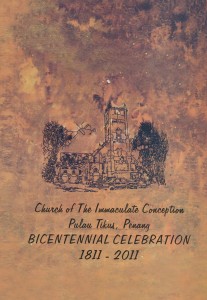10 Oct 2015—Malaysian festivals and celebrations November 9, 2015 – Posted in: Newsletters
Music, dance, trance, colour, ritual, history and community involvement are all part of what makes a festival attractive to both residents and tourists alike. When you add to that mix the diversity of its peoples, Festivals of Malaysia will take you on a festival journey like no other.—Keith Hockton
 Imagine a calendar or a country without festivals and holidays—it would be like a fine opera without the staging—utterly bland and lifeless ! This is even more apparent in a multicultural society in Malaysia, where festivals are an expression of the varied traditions, places, objects, aesthetics and values of a community, passed on from generation to generation. Unfortunately, modernisation has downplayed the elaborate customs associated with religious festivals. City folk know this only too well, particularly during the time of year when major religious festivals roll around and it is time for the balik kampung exodus. Literally translated as ‘returning to one’s village’, the phenomenon of balik kampung was once particularly significant to Malays but these days cuts across all racial lines, real or imagined. Without a doubt, festivals still play a major role in the lives of Malaysians.
Imagine a calendar or a country without festivals and holidays—it would be like a fine opera without the staging—utterly bland and lifeless ! This is even more apparent in a multicultural society in Malaysia, where festivals are an expression of the varied traditions, places, objects, aesthetics and values of a community, passed on from generation to generation. Unfortunately, modernisation has downplayed the elaborate customs associated with religious festivals. City folk know this only too well, particularly during the time of year when major religious festivals roll around and it is time for the balik kampung exodus. Literally translated as ‘returning to one’s village’, the phenomenon of balik kampung was once particularly significant to Malays but these days cuts across all racial lines, real or imagined. Without a doubt, festivals still play a major role in the lives of Malaysians.
Keith Hockton started researching the festivals of Malaysia when he returned to live in Penang early in 2010. His book, aptly titled Festivals of Malaysia, covers over 150 religious and secular festivals in all their many forms, indexed by month and captured in over 200 photographs.
Interestingly, he also includes festivals which do not involve the participation of public audiences. These take place in the privacy of the home, witnessed only by the family and invited guests, and they are featured here courtesy of the families who were kind enough to invite the writer into their homes so that he could experience them firsthand. Almost every person interviewed, even if they were from the same religious group, had different interpretations of the same festival. In the end, their stories, their understanding and all the richness and diversity that their stories entail were woven into Festivals of Malaysia.
 From one book of celebrations to another—albeit of a different sort—one commemorating the bicentennial of the Church of the Immaculate Conception (CIC), Pulau Tikus. The church was founded by survivors fleeing the Phya Tak Massacre of Catholics in Thailand in 1811. Under the leadership of their Parish Priest Father John Baptist Pasqual, they made their way to Pulau Tikus, where the missionaries “would be granted freedom to minister, as well as other conveniences.” The bicentennial was observed with a series of activities by the parishioners from around Pulau Tikus and up to Telok Bahang. The contents of the souvenir book feature all the parish priests connected with the CIC, starting with the Founder Father, John Baptist Pasqual, right up to the present. Edited by Dr. Anthony E. Sibert, it is lavishly illustrated with old and rare maps, handwritten notes, and many photographs from the past and present.
From one book of celebrations to another—albeit of a different sort—one commemorating the bicentennial of the Church of the Immaculate Conception (CIC), Pulau Tikus. The church was founded by survivors fleeing the Phya Tak Massacre of Catholics in Thailand in 1811. Under the leadership of their Parish Priest Father John Baptist Pasqual, they made their way to Pulau Tikus, where the missionaries “would be granted freedom to minister, as well as other conveniences.” The bicentennial was observed with a series of activities by the parishioners from around Pulau Tikus and up to Telok Bahang. The contents of the souvenir book feature all the parish priests connected with the CIC, starting with the Founder Father, John Baptist Pasqual, right up to the present. Edited by Dr. Anthony E. Sibert, it is lavishly illustrated with old and rare maps, handwritten notes, and many photographs from the past and present.
